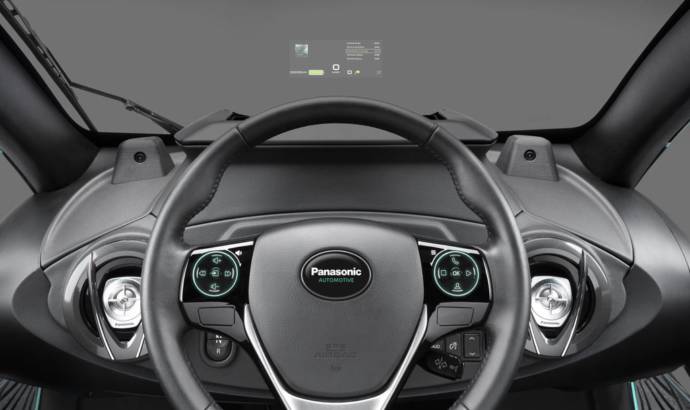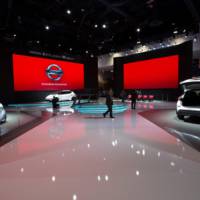Head-up Display is becoming more and more common. Even cars in the small segment can offer this option. See the current generation Mazda2. So, in this case, premium manufacturers have to introduce something more and more advanced. And that’s what Panasonic is hoping for.
Panasonic Automotive’s Head Up Display (HUD) with Augmented Reality (AR) is capable of projecting very large virtual images in the driver’s eye line, using AR to enhance the real world with HUD-generated imagery.
Combined, HUD with AR gives the driver more information and can warn him or her of potential dangers. It also replaces the traditional instrument cluster and with everything running through the HUD, many of the car’s traditional physical controls are replaced too.
Panasonic’s technology features a very compact HUD system, but one that it is capable of projecting very large virtual images – up to 12-degrees to the horizontal and 5-degrees to the vertical – into the driver’s visual path at a distance of 10m in front of the vehicle.
The system recognizes objects in the path of the car and it can warn the driver by displaying alerts in the HUD, distinguishing between pedestrians, other vehicles and other objects, if they are potentially on a collision course.
The system uses a total of eight cameras: a rear camera, front camera, night vision camera, a down side view camera, two additional side view cameras and two cameras which track the driver’s head and eyes.
The system’s capability is so vast that it replaces not only the traditional instrument cluster but also many of the car’s physical controls. Panasonic’s demonstration vehicle features a modified interior that distills the HMI down to simplified steering wheel controls – paired with an integrated capacitive touch panel – completely replacing the car’s traditional stalks.
Demonstrated on a specially adapted Electric Vehicle, the technology can be applied to any new vehicle, while the whole system – from the HUD with AR to the eight cameras – runs from a single computer platform.



